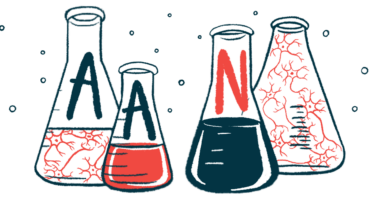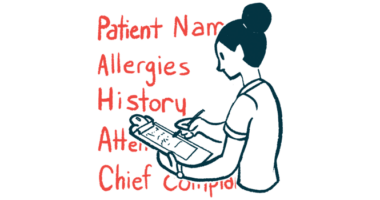Turning Awareness Into Action: How to Support a Loved One With MG

Yay for June!
Do you know why I’m so excited about the sixth month of the calendar year? It never meant much growing up except for the end of another school year. It’s not the month when my son and husband were born. Nope, not our anniversary month, either. I don’t even have any immediate family with June birthdays.
So why do I like June so much now? Because it is Myasthenia Gravis Awareness Month! Coincidentally enough, it is also PTSD Awareness Month. And even more coincidentally, or serendipitously, teal is the awareness color for both. I mention this because not only do I have myasthenia gravis (MG) and post-traumatic stress disorder, but many of my chronically ill friends have developed medical PTSD from ongoing struggles to receive a diagnosis and treatment. Just something to keep in the back of your mind.
My goal for this Myasthenia Gravis Awareness Month is to help turn awareness into action. I’ve mentioned before that not only is it hard to ask for help, but it can be equally difficult to receive offered assistance. Personally, I feel like a burden for requiring and accepting daily assistance. When presented with an opportunity to tell those who want to help how they can do so, my mind goes blank.
Myasthenia gravis affects us all differently, and we tend to respond to available treatments just as uniquely. It’s important to keep this in mind when learning about how MG might affect a loved one. When you know one person with MG, you know one person with MG.
Which leads me to the first step in turning awareness into action: Get to know the person with MG. Learn how this disease affects them on a personal and individual level. Listen to how it affects their daily life as well as their family’s. Understanding their unique challenges can help you find ways to offer support that don’t make the person feel like a burden.
Action step número uno leads us right into suggestion No. 2: Identify ways to help ease your loved one’s workload without too much fuss.
For example, if they have a school-age child and you know they get run-down by the end of the day, offer to pick up little Johnny after swim practice and bring him home. This allows the person to rest and have more energy for making supper and engaging in family time in the evening. I often missed out on family time when my son was in high school because my body was too physically exhausted to engage.
I’ve noticed that many people offer to make a meal when someone needs help. This is great in theory, but can be difficult to arrange in practice. This leads us to another actionable step: assisting with meal preparations, but with a caveat.
Personally, I follow a modified AIP diet (an elimination diet designed to reduce inflammation caused by autoimmune disorders) and my husband is lactose-intolerant. When I was in a special care unit during my first myasthenic crisis last August, we had offers of frozen lasagna, spaghetti, casseroles, and so on. We had to graciously turn them down because it was food we couldn’t eat. Having dietary restrictions makes me feel like more of a burden when accepting help with meals, so it’s easier to decline the offer. But in reality, assistance with meal prep would have been extremely helpful.
Again, this is why understanding how MG affects your loved one is so important. What one person perceives to be an amazing and loving gesture might be less positively received by another.
It is my hope that by taking a slightly different approach to Myasthenia Gravis Awareness Month, I can turn it into a month of action.
How you have helped a friend, family member, colleague, or fellow myasthenic? What did you do and how was it received? Is there anything you would have done differently? Please share in the comments below.
Myasthenia Gravis News is strictly a news and information website about the disease. It does not provide medical advice, diagnosis, or treatment. This content is not intended to be a substitute for professional medical advice, diagnosis, or treatment. Always seek the advice of your physician or other qualified health provider with any questions you may have regarding a medical condition. Never disregard professional medical advice or delay in seeking it because of something you have read on this website. The opinions expressed in this column are not those of Myasthenia Gravis News or its parent company, BioNews, and are intended to spark discussion about issues pertaining to myasthenia gravis.








Comments